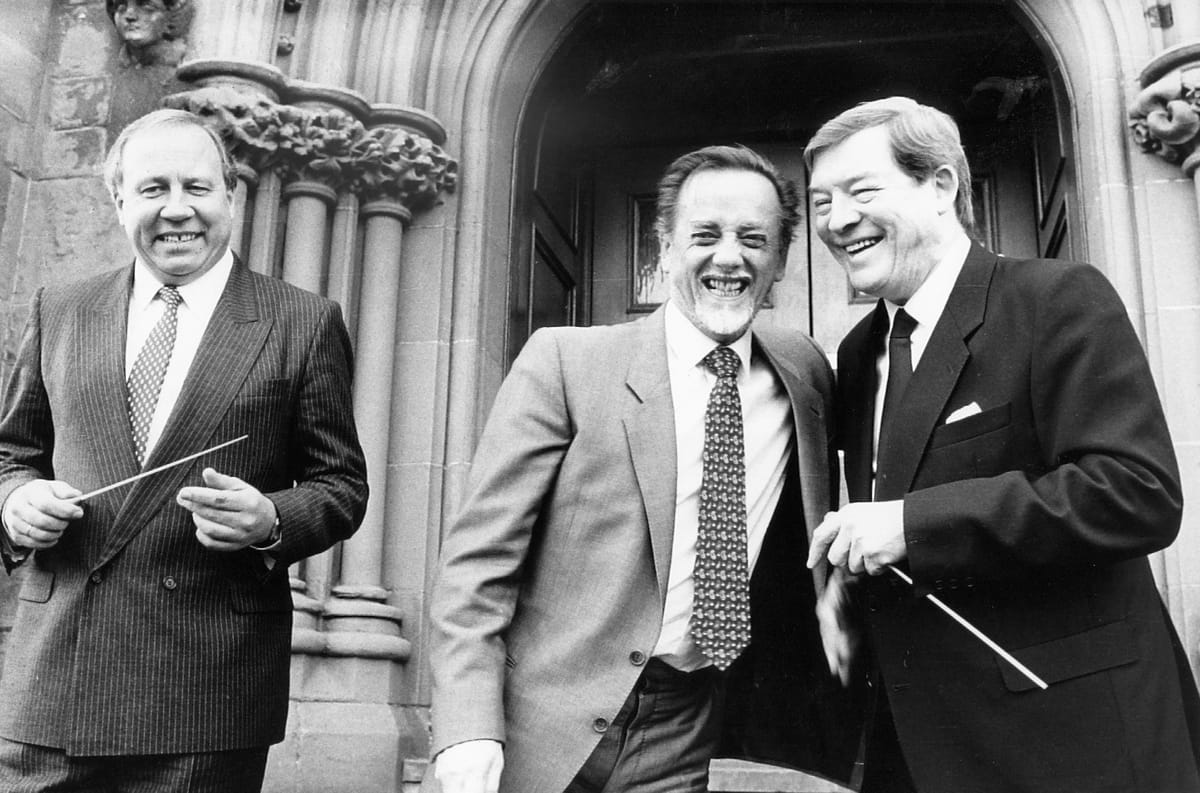Reflections: Musical memories

“April is the cruellest month,” T. S. Eliot wrote in ‘The Waste Land’, “breeding Lilacs out of the dead land, mixing Memory and desire, stirring Dull roots with spring rain.” I don’t know about April being the cruellest month: March was pretty savage with the Coronavirus pandemic crippling the world, and tossing out cultural events along the way.
Faced with a suddenly empty evening, the mind turns to times past. My nostalgia took me back to the two years I spent as an academic at the University of Glasgow. Perhaps because of the NCPA programmes I was missing, I remembered the Glasgow concert hall which had a performance every Saturday, and the Close Theatre which ran weekly plays.
The Close seated about 150 people, and was just the right size to stage small plays. One I remember vividly is Dylan Thomas’s Under Milk Wood, the actors sitting around in a semicircle and reading their parts (after all, it was originally written for the radio). Thomas’s hypnotic words swirled around us as we eavesdropped on the dreams and innermost thoughts of people of a Welsh fishing village. There was Mrs Ogmore-Pritchard, nagging her two husbands even though both were dead; a Captain Cat remembering his days at sea; Organ Morgan (what else but a musician), Lord Cut-Glass and a woman called Polly Garter. Other characters had equally whimsical names.
The play’s very first lines give a flavour of Thomas’s flirtation with language, his playful inventiveness and the lilting rhythm of his sentences:
To begin at the beginning: It is spring, moonless night in the small town, starless and bible-black, the cobblestreets silent and the hunched, courters’-and-rabbits’ wood limping invisible down to the sloeblack, slow, black, crowblack, fishingboatbobbing sea.
The actors I saw were not really known, but over the years Under Milk Wood has seen many spectacular adaptations. The most star-studded must surely be the film version with Richard Burton (very Welsh himself), Elizabeth Taylor, Peter O’Toole, Glynis Johns, Vivien Merchant and Ryan Davies. What a mouth-watering cast.
Memories came flooding back too, of the Scottish National Orchestra (SNO, now known as the Royal Scottish National Orchestra or RSNO), just then finding its feet under conductor Alexander Gibson at Glasgow’s concert hall. A few of us went every Saturday, most of us for the music, some of us for the post-concert beer. The pub was a short walk away, so it was every concertgoer’s go-to place. It was large, but it filled up fast; if you listened for a moment, you realised all the lively chatter was about the just-concluded programme, how the SNO had done a brilliant Brahms, but the Saint-Saëns could have done with a bit more soul…
One Saturday, the pub was full as usual, perhaps even more so because the programme had featured everyone’s favourite music. With no tables free, we were sitting on bar stools with our backs to the other customers, so it didn’t strike us for a few moments that the pub was absolutely and completely silent. I turned around swiftly and found the pub was indeed still full. But it was full of young people who were speech-impaired; they were communicating to each other soundlessly through sign language. They were obviously in an exuberant mood because their gestures were lively and animated. What was the source of excitement, I wanted to ask, but couldn’t. It would have been rude to do so, wouldn’t it?
The one concert I still remember was the premiere of Thea Musgrave’s Clarinet Concerto, with the legendary Gervase de Peyer as soloist. The SNO, under Gibson, did a splendid job performing a complex and unusual work. It is complicated not just musically by its dissonances, but also because it is part of the composer’s series of works which she calls ‘dramatic-abstract’: they are abstract because there is no ‘story’ attached. The dramatic idea is to move the soloist around the orchestra so that at any given time, he is playing with different small ‘concertante’ groups, and he is leading these musicians independent of the conductor. Sounds hellishly difficult, which is perhaps why the work isn’t performed very often.
Years later, I thought I should get a CD of the concerto. I had a bit of a problem though – for the life of me, I could not remember the name of the composer (this was before the age of Internet and Google Search). I happened to be in Birmingham when I saw a tiny record shop in a by-lane. I posed my dilemma to its owner: I was looking for the CD of a clarinet concerto by a Scottish woman composer, premiered in Glasgow some years ago. “Composer’s name?” he asked, an obvious question. I shook my head. Suddenly, the only other customer in the shop turned around to me. “I know the work,” he said. “I should. After all, I was part of the orchestra at the premiere!”
You would need to be a Ramanujan to calculate the odds for that.
By Anil Dharker. This piece was originally published by the National Centre for the Performing Arts, Mumbai, in the April 2020 issue of ON Stage – their monthly arts magazine.





